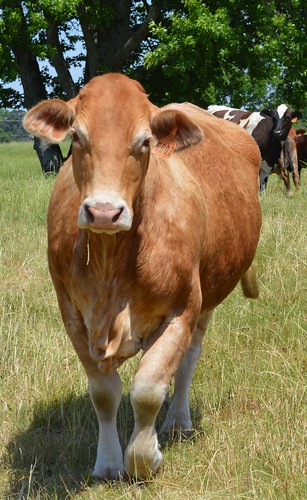
During its 100 years of serving the livestock industry, USDA Market News – part of USDA’s Agricultural Marketing Service (AMS) – has prided itself in creating transparency and clarity in the marketplace by allowing all industry stakeholders to have the same information about the market at the same time. The entire agricultural supply chain relies on USDA Market News for timely, unbiased data. Without this free service, information would not be available to everyone equally, making USDA Market News a vital lifeline for America’s agricultural economy.
Over the years, countless changes have occurred in the livestock industry – like the way that livestock standards are applied and the way market reporting is conducted. To keep up with these changes, livestock correlations are held to assure the industry that all USDA market reporters are applying the USDA’s livestock grades and standards consistently and accurately.
AMS develops, maintains and interprets USDA’s livestock grades and standards – like the Prime, Choice or Select grades used for beef. USDA grades and standards ensure uniformity in products and quality, as well as in USDA’s market reports published across the nation. Grades and standards provide a common trade language that ranchers, wholesalers, retailers, and consumers are familiar with and rely on to buy and sell effectively.
Recently, a group of market reporters from the Livestock, Poultry, and Grain Market News division attended a livestock correlation at Penn State University facilitated by its on-campus meats laboratory. At Penn State, market reporters evaluated a pen of cattle and a pen of lambs and assigned the appropriate livestock quality and yield grade, while veteran market reporters spoke about the animals’ distinguishing qualities. The Penn State campus offered a unique venue for the correlation, having a full meat processing and cutting facility right on campus.
The next day, the market reporters returned to Penn State to correlate their live animal grade designations from the previous day to the same animal’s post-slaughter grade designations, comparing and correlating their findings to check consistency and accuracy in their findings.
Livestock correlations are just one way that USDA Market News upholds its commitment to accuracy and consistency in its reports. Market reporters understand that in order for their reports to be as meaningful as possible, a Choice grade steer in Georgia needs to be comparable to a Choice grade steer in Iowa, just as a Prime lamb in Pennsylvania has to be equal to a Prime lamb in Colorado.
This uniformity, strengthened by the continuous work of market reporters, makes USDA Market Reports some of the most trusted and respected in the world.

